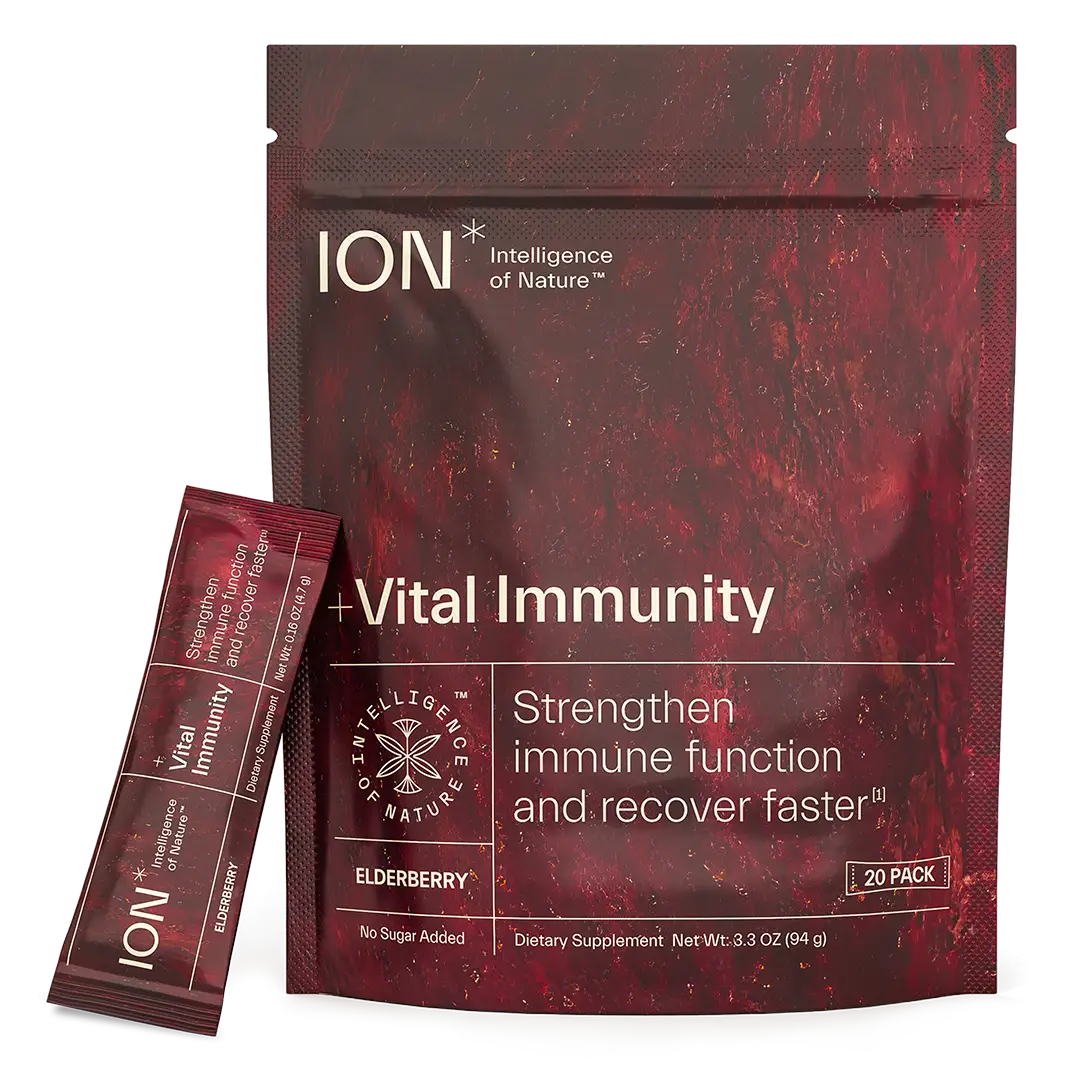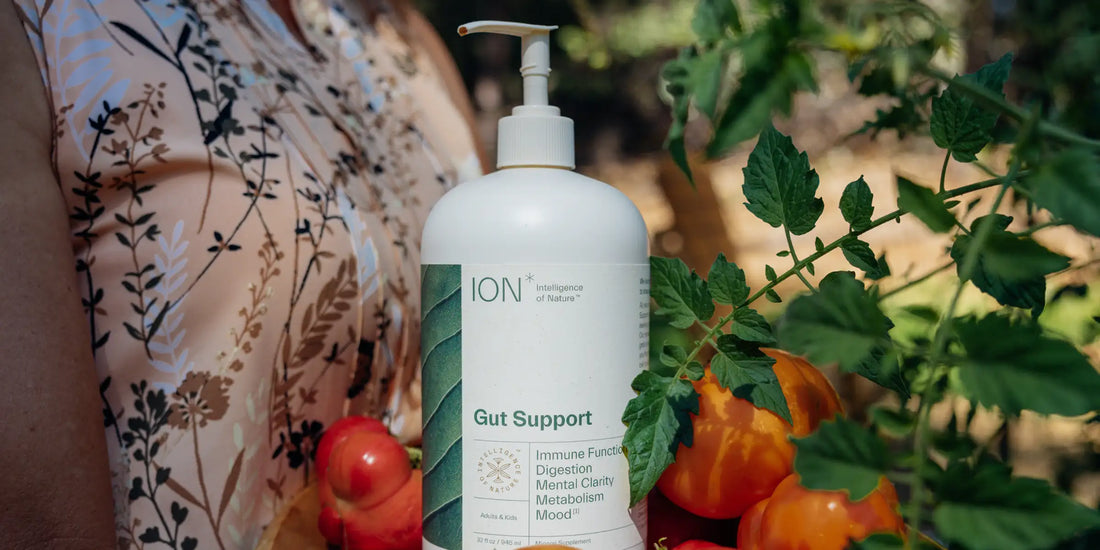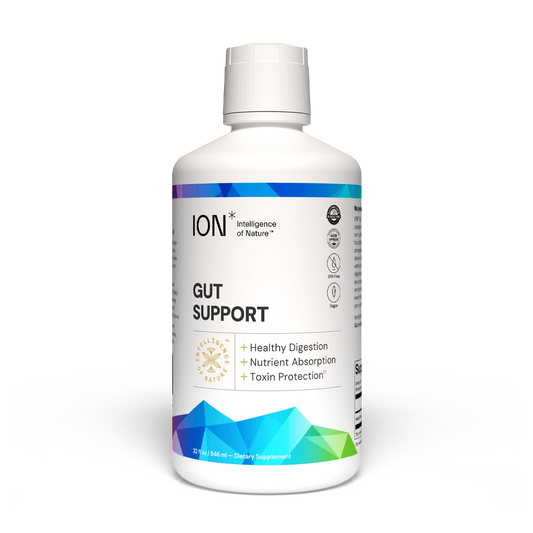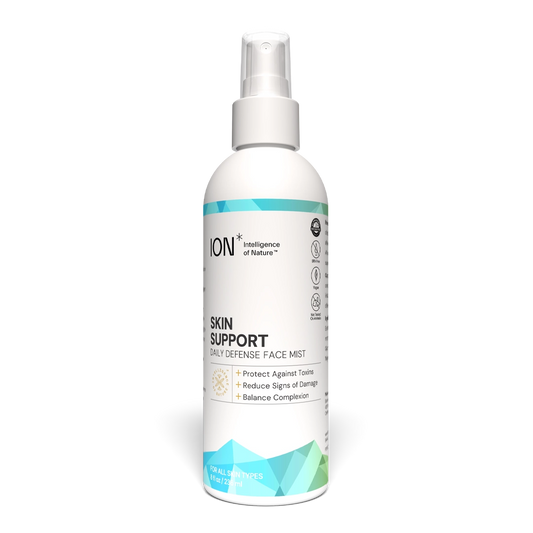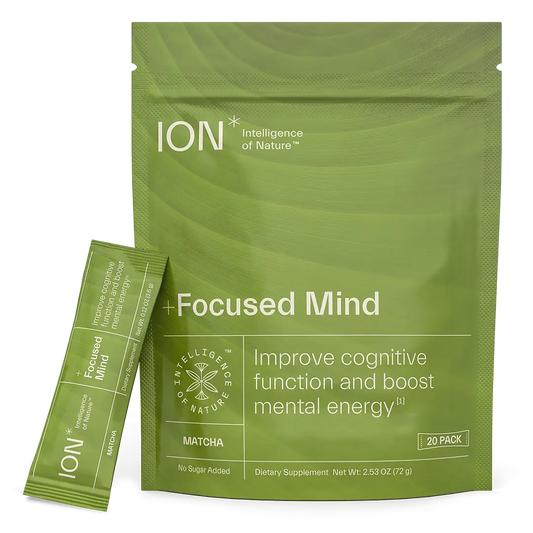More than just localized bacterial colonies that serve specific functions throughout our body, our evolved understanding of the human microbiome has scientists asking the question – "Do we control our microbiome or does it control us?" After all, the microbiome as we know it influences almost every aspect of life, from our mood and mental state to our appetite and bowel movements. So, what exactly is the microbiome?
The microbiome refers to the complex ecosystem of microorganisms that naturally inhabit our bodies. These microorganisms include bacteria, fungi, viruses, and their genes, and most of them are symbiotic and vital to optimal human health.[1]
The human microbiome is more than just the gut
By definition, the microbiome is often tossed around as being synonymous with the gut microbiome. But the gut is just one central biosphere where most of the body's microorganisms live and originate. The human microbiome is far more sophisticated.
The human microbiome as a whole is composed of a wide variety of communities of bacteria that have a far greater complexity throughout the human genome itself. In addition to the gut microbiome, our skin, eyes, mouth, nasal cavities, and lungs, among others, all have unique environments composed of various microorganisms that serve different functions.
To help put the human microbiome into perspective, think of it as a garden that needs tending to. There are unique varieties of plants that make up the collective garden, each requiring a healthy equilibrium of microorganisms to thrive. Like our own microbiome, the garden is in constant exchange with the surrounding environment's microbiome – the air, water, soil, and food – which in turn, influences its own microbiome health.
As gardeners to our own microbiome, the microorganisms (also called microbes) that we're exposed to are fundamental in shaping our overall health. Through nourishment, our natural surroundings, and the conditions we inhabit, we quite literally breathe our biome like the plants in a garden.
Why is the microbiome important?
It’s no secret that the microbiome plays an essential role in human health in various ways. The bacteria in the microbiome are essential in the digestion of the food we eat, regulation of the immune system, protection against other disease-causing bacteria, and production of key vitamins, like Vitamin K, Vitamin B12, thiamine, and riboflavin.
The microbiome is a vital system in maintaining a healthy balance of microbes; any imbalances or overdominance in one particular bacteria, fungi, or virus can influence the development of various diseases.
For example, there are specific microbe-derived metabolic signatures in the gut microbiome, that when elevated, are associated with the development of atherosclerotic cardiovascular disease (ACVD).[2] But perhaps even more interesting of late is the microbiome’s connection with the brain and its influence on our mental and emotional well-being. This microbiome-mood connection has opened up an entirely new conversation.
What does the microbiome do?
The makeup of our microbiome has a profound impact on practically every organ in our body, thereby influencing our immune system, central nervous system, endocrine stress response, and so much more. Within that, its role influences the neurotransmitters in our brain, which regulate dopamine, serotonin, and gamma-aminobutyric acid (GABA).[3]
In essence, the microbiome is a big deal when it comes to whole-body health and its role impacts numerous systems, many of which have overlapping functions. Let's break down what it actually does across the various systems throughout the body.
Supports the digestive system
Perhaps the most well-known role is the microbiome’s influence in supporting the digestive system. In general, the gut microbiome is a critical component of digestion, breaking down complex carbohydrates, proteins, and fats which can be used to produce energy throughout the body. More specifically, the gut microbiota serves a range of specific functions, including energy recovery from the metabolism of non-digestible food particles, protection of a host from pathogenic invasion, and modulation of the immune system (more on this below).
This isn’t just an assumption, as the gut microbiota provides essential capacities for the fermentation of non-digestible substrates like dietary fibers.[4] Dietary fiber can only be broken down and fermented by enzymes from microbiota living in the colon. As a result of this process, short-chain fatty acids are released, which are vital components in maintaining gut integrity, inducing reactive oxygen species (ROS), altering cell proliferation and function, and supporting anti-inflammatory, antitumorigenic, and antimicrobial effects.[5]
What’s especially fascinating is how the state of your gut can also have a profound influence on your emotions and behaviors, as mood-affecting chemicals like serotonin are produced in large quantities in the gut (more on this below as well).
Overall, digestion and the gut microbiome are rooted in many of the underlying functions performed by the body, which has highlighted the importance of nutrition and eating gut-healthy foods rich in fiber and naturally-occurring bacteria.
Modulates the immune system
When the balance of microorganisms is off, or in a state of dis-ease, the potential for sickness is far more likely. In turn, the microbiome has become widely known for its impact on the body's immune system. Studies have shown that early exposure to pervasive microorganisms can support increased microbiota diversity and improved immune system efficacy against common diseases.[6]
The human immune system has evolved to maintain a symbiotic relationship between the host and microbiota. Any disruption in this dynamic immune system relationship can contribute to several diseases. For instance, deviations in microbiota – particularly in the gut – are linked to a host of diseases, including obesity, type 2 diabetes, hepatic steatosis, and intestinal bowel diseases (IBDs).[7]
Regulates hormones, the endocrine system, and reproductive health
The endocrine system, which is a complex network of glands and organs, uses hormones to control and coordinate several aspects of a healthy body, including metabolism, energy levels, growth, and development, reproduction, and responses to injury, stress, and mood. As you can imagine, the microbiome's impact on the endocrine system is multifold.
The gut microbiota produces various hormonal chemicals that are released into the bloodstream and act at distal sites farther from the gut, such as key organs like the brain. But perhaps more fascinating is the emerging science that supports the gut microbiome as an endocrine organ itself. Numerous studies have found bacterial metabolites of the gut to have a key role in affecting organ function, and subsequently, corresponding physiological outcomes.
There is growing evidence to suggest that the reproductive microbiome may be influential in one's overarching reproductive health, fertility, and pregnancy.[8] Recent research indicates that the reproductive microbiome can influence the outcomes of pre- and postcopulatory sexual selection, otherwise known as the processes that influence our ability to successfully mate.[9]
Reinforces respiratory health
The respiratory microbiome has a direct impact on the host's local immune system, specifically the development of respiratory diseases and illnesses, including allergies, asthma, and others.[10] In turn, imbalances of both the gut and lung microbiome contribute to asthma, the activation of inflammatory pathways, and bronchial constriction as well as hyperresponsiveness, an overly sensitive response of the airways to various triggers.[11]
Microbes that are introduced to the system by inhalation of air, aspiration, and direct dispersion along the mucosal surfaces of the mouth and nose can all influence the state and balance of microbial health in the lungs. This makes the microbiota of the respiratory tract important gatekeepers in providing resistance to respiratory pathogens and warding off infection and lung diseases.
Shapes mental and emotional health
Recent advancements in scientific research have highlighted the gut microbiome as an influential factor in determining our mental and emotional state of being. The primary mechanism at play is the gut-brain axis – a bidirectional communication network that links the cognitive and emotional centers of the brain with the intestinal functions of the gut microbiome.[12]
The primary interface of the gut-brain axis is the vagus nerve, which has nerve fibers that stem into both the brain and the gut. The vagus nerve is able to sense the activity of the microbiota and transfer this information from the gut to the central nervous system.
To put it more simply, the vagus nerve is the primary link between the gut and the brain that communicates the effects of stress and negative emotions on the gut – and vice versa – the effects of gut microbiome changes on mental well-being. This is why we often experience digestive problems when under a lot of stress, as well as why we may experience brain fog when we eat a poor diet.
This is why the gut is often referred to as the "second brain." It produces many of the same neurotransmitters as the brain, namely dopamine, serotonin, and GABA. While the production of serotonin is controlled by both the gut microbiome and the nervous system, about 95% of the body's serotonin makeup is located within the GI tract and is primarily synthesized by enterochromaffin cells. The remaining 5% is local to the nervous system.
It's clear that the gut microbiome is an important junction of the gut-brain axis, and therefore, the types of bacteria being metabolized in the gut can influence the activity of the brain. This has catapulted a major health trend focused on how to improve your gut health, putting topics like diet, nutrition, and supplementation in the spotlight.
Other areas that the human microbiome impacts
While we touched on digestion; endocrine, respiratory, and immune system function; and overall mood and mental well-being, the human microbiome extends to other important functions across various other aspects of our health, including:
- Cardiovascular health: Some studies suggest that the composition of the microbiome may play a role in the development of cardiovascular disease. [13] For example, certain bacteria in the gut have been linked to increased levels of inflammation, which is a known risk factor for heart disease.
- Metabolism and obesity: The microbiome has been linked to metabolism and obesity, and alterations in the microbiome may contribute to the development of obesity and related metabolic disorders.
- Autoimmune diseases: There is mounting evidence to suggest that alterations in the microbiome may contribute to the development of autoimmune diseases, such as rheumatoid arthritis and multiple sclerosis.[14]
- Oral health: The microbiome in our mouth can influence oral health and contribute to the development of conditions such as cavities and gum disease.
- Skin health: The microbiome on our skin can protect against harmful pathogens and maintain a healthy balance of bacteria that can help prevent skin infections.
Perhaps a better question is what does the microbiome not do in terms of influencing key systems throughout our bodies. As we know it, these specialized microbial colonies appear to be the rulers of a functioning human body.
Where is the human microbiome?
Sure, the gut gets all of the attention and undoubtedly contains the highest density of microorganisms. But the diversity of microorganisms like bacteria, fungi, and viruses, inhabit just about every part of the human body. They're also found on the skin, up the nose, around the eyes, and in the mouth.
The human microbiome as a whole is made up of trillions of these microorganisms – outnumbering human cells by 10 to 1.[15] But because of their microscopic size, these microorganisms collectively make up only 1 to 3 percent of the body's overall mass and they're spread throughout different parts of the body, largely living in mucosal tissues that line the body's canals and organs in the digestive, respiratory, and reproductive systems.
More specifically, the more concentrated pockets of microbes that occupy these colonies are located in certain parts of the body, including:
Skin
The microbiota of the skin, also known as skin flora, refers to the ecosystem of microorganisms that reside on and in the skin. Most of these are comprised of rod and round bacteria species like Proteobacteria and Staphylococcus spp., which form deeply intertwined communities that live among themselves and other microorganisms. Most of the skin’s microbiota – which together make up over 1,000 different specifics of microorganisms – are found in the superficial layers of the epidermis and the upper parts of hair follicles.[16]
Mouth
The oral microbiome is among the most complex, diverse, and dynamic communities of microbes that play an essential role in maintaining the health of the mouth and overall systemic health. The mouth hosts millions of different bacteria, fungi, viruses, and protozoa, and it's an exceptionally complex environment given the many niches of the oral cavity.
Gut
The gut microbiome is another highly complex community of microorganisms that reside in the gastrointestinal tract, including the stomach, small intestine, and large intestine. Not only is it the most abundant microbiome in the body in terms of sheer volume of microbes, but it plays a critical role in many vital aspects of human health, including digestion, metabolism, mood, and immune function.
The gut microbiome is primarily composed of bacteria, although it can also host viruses, fungi, and other microbes. Its overall balance is influenced by various factors, including diet and nutrition, lifestyle and stress, age, and medical history. A diverse and balanced gut microbiome is essential for maintaining optimal health, while imbalances are attributed to a host of health conditions, including inflammatory bowel disease, obesity, and metabolic disorders.
Respiratory Tract
The microbiome of the respiratory tract is the community of microorganisms that inhabit the sinuses, throat, bronchi, and lungs, which is often viewed as a gateway to the gut microbiome. It plays a crucial role in regulating immune function, protecting against pathogens, and maintaining the health of the lungs and respiratory system as a whole.
Imbalances and disruptions of the respiratory tract microbiome have been associated with various respiratory conditions, including asthma, chronic obstructive pulmonary disease, and pneumonia. Research in this area is still ongoing, but it is clear that the microbiome in these airways plays an underlying role in respiratory health and it's an area that warrants further study.
Reproductive System
The microbiome of the reproductive system refers to the microorganisms that help maintain ecological balance in host fertility and fitness. In females, the reproductive system microbiome includes the vagina, cervix, and uterus, while in males, it's concentrated in the urethra and seminal fluid. The microbiome of the reproductive tract also plays a crucial role in protecting against sexually transmitted infections and diseases.
Eyes
The microbiome of the eyes, also known as the ocular microbiome, is made up of microorganisms that live on various surfaces of the eye, including the eyelids, conjunctiva, and tear film. These bacteria play a crucial role in maintaining the health of the eye by producing antimicrobial compounds, competing with harmful microorganisms for resources, and modulating the immune system. However, an imbalanced or disrupted ocular microbiome has been associated with various eye conditions, including conjunctivitis, dry eye syndrome, and corneal ulcers.
Overall, the microbiome is omnipresent throughout various parts of the body. When balanced and in homeostasis, these localized microbiota communities play a vital role in maintaining optimal health while preventing infection and disease.
History of the human microbiome
Early pieces to the microbiome puzzle were evident well before advancements in modern medicine and technology. In fact, the first scientific discovery indicating that microorganisms are an integral part of the human body emerged in the 1880s when an Austrian pediatrician named Theodor Escherich observed a type of intestinal bacteria (which would later be named Escherichia coli or E. coli) in children affected by diarrheal disease versus that of healthy children.[17]
It wasn’t until 1988 that the term "microbiome" was used to describe the collection of microbes and their activities within a given environment.[18] With advancements in science and research methods, the focus of the microbiome has transitioned from cataloging the diversity of microorganisms to analyzing their role in human health and disease.
As DNA sequencing technology emerged, the ability to study the composition of complex microbial communities dramatically improved, allowing for precise and rapid taxonomic identification of individual microbes within those communities. The advent of these technologies, along with milestones in genomic sequencing in the late 1990s and early 2000s, propelled researchers in being able to fully explore the complexity and diversity of the human microbiome as we know it today.
How to optimize microbiome health?
Improving microbiome health involves taking steps to promote the growth and diversity of beneficial microorganisms in the gut while reducing the population of harmful bacteria. The underlying benchmark is diet and nutrition, or what we put into our bodies. But as growing evidence connects the dots between mental well-being and microbiome health, optimizing one's emotional and mental state is becoming increasingly important.
Here are several strategies you can employ to optimize for microbiome health:
- Consume a diverse diet rich in plants: Eating a wide variety of fruits, vegetables, grains, and legumes can enhance the diversity of your gut microbiome while ensuring you're getting sufficient vitamins and nutrients.
- Limit sugar and processed foods: Consuming a diet high in refined sugar and processed foods can disrupt the balance of healthy gut bacteria, thereby leading to an overgrowth of harmful bacteria. These are typically packaged goods, like sweets, cakes, crackers, and other foods you find on the shelf of grocery stores.
- Incorporate fermented foods in your diet: Fermented foods like yogurt, kimchi, and sauerkraut contain probiotics, which can help to increase the volume and diversity of healthy bacteria in the gut. Drinks like kombucha also contain an abundance of natural probiotics.
- Minimize alcohol intake: Reducing alcohol consumption or avoiding it altogether can help to optimize the health of your gut microbiome. Not only can alcohol disrupt the balance of beneficial gut bacteria, but chronic alcohol consumption is linked to an increased risk of gut inflammation and intestinal permeability.
- Take care of your gut: While it may seem obvious, taking care of your gut health is the common denominator in supporting your microbiome health. In addition to good nutrition and dietary habits, certain supplements can help good bacteria flourish. That’s where ION* Gut Support comes into play–an all-natural, scientifically proven wellness solution designed to help your body (and biome) thrive.
- Reduce stress: Chronic stress, as well as mental health conditions like anxiety and depression, can disrupt the balance of gut bacteria. Incorporating stress-reducing behaviors like meditation, yoga, and getting sufficient sleep can help to improve gut health.
- Get enough sleep: Lack of sleep and poor quality sleep can also disrupt the balance of gut bacteria. This ties into stress and maintaining optimal mental health. It's crucial to aim for 7-8 hours of sleep per night to maintain whole-body health.
- Avoid unnecessary antibiotics: While critical in helping overcome infections and mend certain illnesses, antibiotics kill both harmful and beneficial bacteria in the gut. It's important to only take them when necessary.
There’s a lot that goes into maintaining a healthy microbiome. Similarly, there’s a lot that our microbiome does in shaping our overall health and all of its moving parts. Learn more about gut health, the microbiome, and other aspects of your health by exploring our blog. Or take a look at our gut support product and make strides to maintain a healthy, flourishing microbiome.
Scientific References
- https://www.niehs.nih.gov/health/topics/science/microbiome/index.cfm
- https://www.sciencedirect.com/science/article/pii/S1021949819300122
- https://www.ncbi.nlm.nih.gov/pmc/articles/PMC8234057
- https://www.bmj.com/content/361/bmj.k2179
- https://pubmed.ncbi.nlm.nih.gov/24388214/
- https://www.ncbi.nlm.nih.gov/pmc/articles/PMC7362776/
- https://gut.bmj.com/content/71/5/1020
- https://academic.oup.com/hropen/article/2022/2/hoac015/6553029
- https://www.cell.com/trends/ecology-evolution/fulltext/S0169-5347(19)30325-8
- https://www.ncbi.nlm.nih.gov/pmc/articles/PMC7599718/
- https://link.springer.com/article/10.1007/s00281-019-00775-y
- https://www.ncbi.nlm.nih.gov/pmc/articles/PMC4367209/
- https://www.ncbi.nlm.nih.gov/pmc/articles/PMC7215967/
- https://www.ncbi.nlm.nih.gov/pmc/articles/PMC6300652/
- https://www.nih.gov/news-events/news-releases/nih-human-microbiome-project-defines-normal-bacterial-makeup-body
- https://www.ncbi.nlm.nih.gov/pmc/articles/PMC3535073/
- https://www.britannica.com/science/human-microbiome
- https://asm.org/Articles/2019/March/Microbiomes-An-Origin-Story


